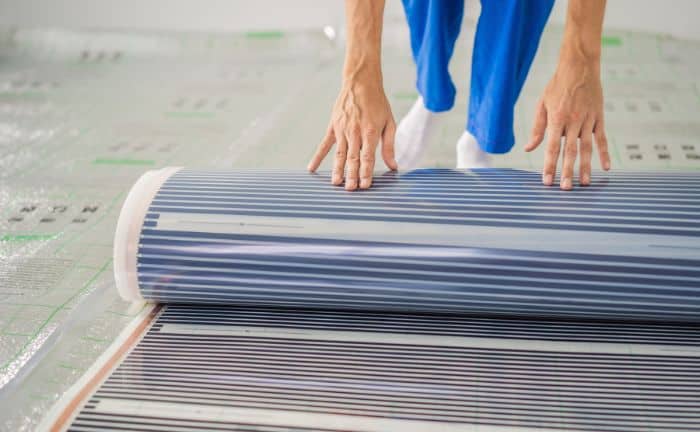Underfloor heating is one of the best alternatives to install in our home since it allows us to reduce our energy consumption in addition to not occupying space. This is why it has become one of the eco-friendly options most requested by users in the face of saving on heating costs.
But what floor works best with underfloor heating? The truth is that wood has always been the most recommended, but we bring you other options that will also help your underfloor heating installation work perfectly.
Types of flooring you can use when installing underfloor heating
Underfloor heating is one of the best alternatives to make the most of our home’s energy resources. This installation allows us to distribute the heat in our home evenly, reducing the necessary energy consumption.

And not only that but it can also be used as an alternative to air conditioning if we choose a double installation with the possibility of cooling underfloor heating —a way to achieve energy savings throughout the year.
But, to get the most out of it, we must know that some flooring types conduct heat and cold better than others. Today we will tell you about them so that, when it comes to installing this system, you can choose the one you like best for your home.
System of heating for underfloor
Natural stones
Stone is a very conductive material, allowing underfloor heating to work perfectly. However, we must be aware that some types of stone heat up less than others, so we must inform ourselves correctly before choosing one.
Laminates
Secondly, we have laminates, and floorings that imitate wood but are manufactured with compact materials to make them harder. These alternatives are suitable and provide great resistance to the floor, but you must consider one thing: the thinner they are, the better they will conduct the heat or cold of the radiant floor.
Vinyl
In the past, vinyl floors were not very well accepted and were associated with something cheap, but today some very interesting models offer many benefits for our home. In addition, they have designs that imitate tiles or slats, so they are an excellent aesthetic solution that will help our radiant floor work perfectly.
Ceramics
As with stone, ceramic floors are also an option that works well with underfloor heating because they have lower thermal resistances. In addition, they also retain heat, thus increasing the efficiency of this system.
Continuous floors
Continuous flooring can also be an interesting alternative for use with underfloor heating. For example, micro cement or alabastrine plaster allow heat to be conducted very efficiently and also helps us to regulate the humidity in the room.
Wood
Finally, wood is also an alternative that we can consider, although its heat conduction is somewhat less than many of the other options we have been looking at so far in our listing. In addition to having a higher price, that can affect our pocket.
As you have seen, there are many alternatives to placing the upper floor above the radiant floor, all of which have an attractive aesthetic. You only have to choose the ones you are most interested in and leave them in the hands of a specialist who can help you carry out the installation process.
What is the most popular type of flooring for homes in the United States?
Porcelain tile, the best flooring for a house and it is becoming more and more popular. In addition, it has characteristics of hardness and resistance that make it superior to other types of products. It is a very resistant type of flooring. It requires no maintenance and is very easy to clean (simply with water and/or common detergents).
How much does a square meter of underfloor heating cost?
The price of the radiant floor also varies depending on the system used, so the electric radiant floor has a cost of 40-50 per m2, while the water radiant floor of 50-70 to which must be added the cost of the boiler (1,000 if condensation or low Nox), all with installation included.